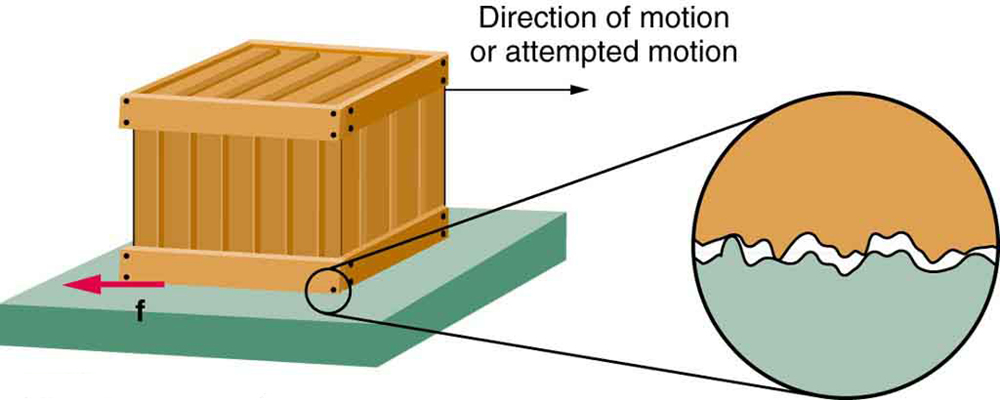Introduction
Friction is a force that arises between two objects that have surfaces in contact with one another. Friction opposes the relative motion between two objects, if they are slipping, and opposes the direction they would slip if the friction was not present, for those that are not slipping.  Friction comes in two types, static friction and kinetic friction. Kinetic friction acts when the surfaces of the objects are slipping. It is equal in magnitude to the normal force at the surface times the coefficient of kinetic friction. Static friction acts when there is no relative motion between the objects. The force of static friction is as large as it needs to be to prevent the objects from slipping. The maximum force of static friction is equal to the normal force at the surface times the coefficient of static friction.
Friction comes in two types, static friction and kinetic friction. Kinetic friction acts when the surfaces of the objects are slipping. It is equal in magnitude to the normal force at the surface times the coefficient of kinetic friction. Static friction acts when there is no relative motion between the objects. The force of static friction is as large as it needs to be to prevent the objects from slipping. The maximum force of static friction is equal to the normal force at the surface times the coefficient of static friction.
Friction model I: Static vs. Kinetic
Key Terms
Text/Videos
Here is the chapter on friction from the OpenStax textbook;
For a more information on friction check out this site;
Warning: Be aware that hyperphysics does a very poor job of indicating the vector nature of forces. Remember, force always has a magnitude AND direction and must always be added vectoraly.
Friction Tutorial: Gives a pretty good representation on how to think about friction.
Finally check out the important features and problem examples for friction.
Simulations
This applet has some great tools to learn about friction. Near the top of the applet there is a tab that says friction; open that. Start by just applying a small force. Watch what happens to the force of friction as you increase the applied force? What happens when the applied force gets very big? After static friction is broken what can we say about the magnitude of the force of friction as the block slides around?
Now try the same thing, but with a ramp;
Additional Studying/Review
- A concise definition of friction with proper notation.
-
A presentation all in one that describes both static and kinetic with two quick questions. The notation and use of physics descriptions is accurate. This presentation can be used for both.
- Sliding, rolling and fluid friction described with examples. The website is cluttered with a lot of other stuff, and many resource links.
- Really like the intro to this; Doc Schuster Kinetic Friction
- A look at Static Friction
- This video demonstrates how to find the coefficient of kinetic friction with 2nd law